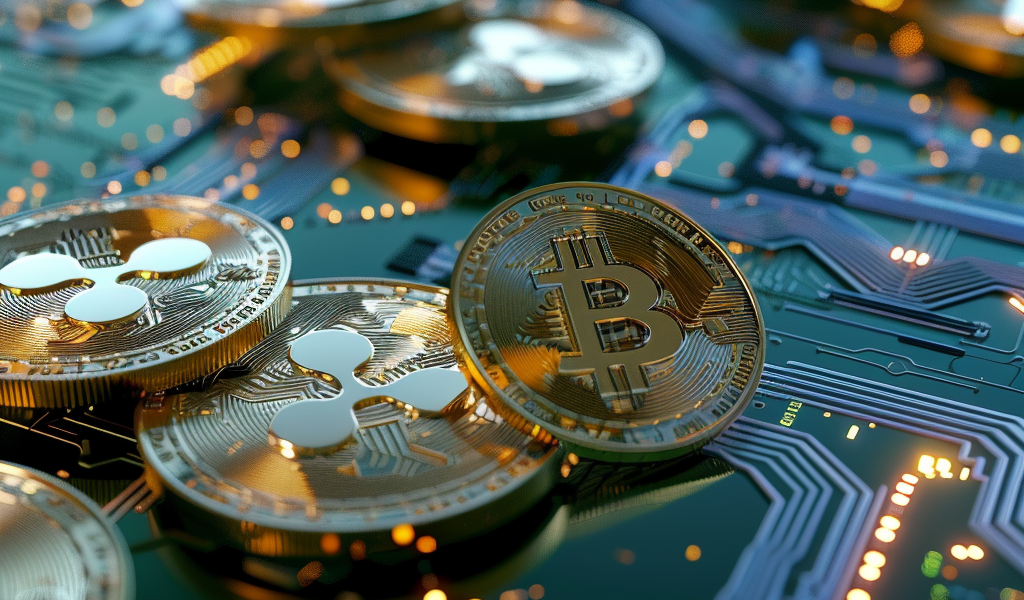Ripple, a pioneering digital payment network, has emerged as a significant player in the realm of cryptocurrency and international finance since its inception in 2012 by Chris Larsen and Jed McCaleb. The network utilizes its native cryptocurrency, XRP, to facilitate fast and cost-effective money transfers across borders, offering a robust alternative to traditional banking systems such as SWIFT.
One of the standout features of Ripple is its innovative approach to transaction validation. Unlike many cryptocurrencies that rely on mining, XRP was pre-mined at launch, with a total supply of 100 billion tokens. Ripple Labs, the company behind the network, retains approximately 48 billion XRP in escrow, strategically releasing up to 1 billion tokens each month to manage supply and stabilize prices.
How Does Ripple (XRP) Work?
The Ripple network operates on the Ripple Protocol Consensus Algorithm, a unique system that validates transactions through a network of designated servers. These servers compare transaction records until they achieve a supermajority agreement, enabling the network to process transactions in just 3 to 5 seconds. This remarkable efficiency allows Ripple to handle up to 1,500 transactions per second, positioning it as a faster alternative to conventional blockchain networks.
When banks engage with Ripple for cross-border payments, they have the option to utilize XRP as a bridge currency or to leverage Ripple’s sophisticated messaging system, which optimizes existing currency transfers. For instance, if Bank A wishes to send US dollars to Bank B in euros, the network can automatically identify the most cost-effective route, whether through direct currency exchange or by employing XRP as an intermediary. This flexibility enables financial institutions to significantly reduce transaction costs while retaining control over their operations.
Key Features Of Ripple
Ripple’s architecture offers several advantages that make it attractive for global transactions, particularly for financial institutions dealing with substantial volumes of cross-border payments. The three primary benefits include:
Speed and Efficiency
Ripple’s transaction processing time of 3 to 5 seconds is a game-changer in the financial world. In contrast, Bitcoin transactions can take up to 10 minutes to confirm, while traditional banking systems may require several days to settle international payments. This rapid processing is made possible by Ripple’s unique validation process, which eliminates the need for mining.
Cost-Effectiveness
Ripple’s low transaction fees are another compelling reason for its adoption among banks and financial institutions. The cost of using XRP for cross-border transactions is significantly lower than traditional banking fees, making it an attractive option for institutions looking to reduce operational costs.
Scalability
As the demand for digital payment solutions grows, Ripple’s ability to scale is a vital feature. The network can process a high volume of transactions simultaneously, making it suitable for large-scale operations in the global financial landscape.
How Can Ripple Be Used?
Ripple’s versatility extends beyond just facilitating bank transfers. It can be employed in various applications, including remittances, payment processing for businesses, and even micropayments. The ability to convert different currencies seamlessly and at a low cost positions Ripple as a valuable tool for both consumers and businesses alike.
Where Do You Buy Ripple (XRP)?
Acquiring XRP is straightforward, as it is available on numerous cryptocurrency exchanges. Popular platforms allow users to buy, sell, and trade XRP against various fiat currencies and other cryptocurrencies. Users should ensure they choose a reputable exchange that offers secure transactions and complies with regulatory standards.
Ripple’s Risks and Challenges
Despite its numerous advantages, Ripple faces several challenges in the competitive cryptocurrency market. Regulatory scrutiny is one of the most significant risks, as governments worldwide continue to evaluate and establish frameworks for digital currencies. Additionally, the reliance on banks and financial institutions for adoption could limit Ripple’s growth potential if these entities choose to develop their own solutions.
Ripple’s Future
The future of Ripple and its cryptocurrency, XRP, remains a topic of significant interest among investors and financial experts. With ongoing developments in the realm of blockchain technology and increasing acceptance of digital currencies, Ripple is well-positioned to capitalize on the evolving landscape of global finance. As financial institutions continue to seek efficient and cost-effective solutions for cross-border payments, Ripple’s unique offerings may play a pivotal role in shaping the future of international transactions.
Frequently Asked Questions (FAQs)
What is Ripple?
Ripple is a digital payment network that utilizes its cryptocurrency, XRP, to facilitate fast and low-cost international money transfers.
How does Ripple differ from other cryptocurrencies?
Ripple does not rely on mining for transaction validation; instead, it uses a consensus algorithm and was pre-mined at launch.
Can Ripple be used for personal transactions?
Yes, Ripple can be used for various applications, including remittances and payment processing for businesses.
What are the risks associated with investing in Ripple?
Investors should consider regulatory risks, market competition, and the reliance on financial institutions for adoption.
Where can I buy XRP?
XRP is available on many cryptocurrency exchanges, where users can trade it against various fiat currencies and other cryptocurrencies.





